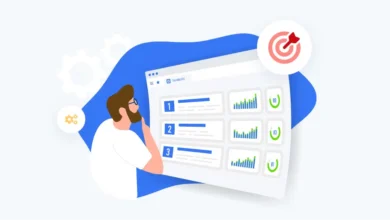
In the digital age, where websites are the frontiers of brands, SEO and user experience stand as gatekeepers of online visibility. In this fast-paced digital realm, images play a pivotal role in both aesthetic appeal and information delivery. However, these visuals come at a cost if not handled properly. When images are not optimized, they slow down page load times, increase bounce rates, and hinder your SEO strategy. As a small business owner, web developer, or SEO enthusiast, leveraging image compression can significantly impact your website’s performance. This comprehensive guide will unravel the how-tos and why-tos of implementing image compression to boost your SEO.
Understanding Image Compression
Before we explore how image compression affects your SEO, it’s crucial to understand the basics. Image compression is the process of reducing the file size of an image without overly compromising its quality. This is often achieved by removing certain image data or by using algorithms that compress the image more efficiently.
Image File Types and Web Usage
Three file types dominate the web when it comes to images: JPEG, PNG, and SVG.
- JPEG (Joint Photographic Experts Group): Best for photographs and images with many colors. JPEG compression can significantly reduce file sizes with minimal quality loss.
- PNG (Portable Network Graphics): Ideal for images requiring text and transparency. PNGs come in compressed and uncompressed variants.
- SVG (Scalable Vector Graphics): Utilized for vector images and logos, as they scale with no loss of quality and can be compressed easily.
Web Performance and User Experience
High-resolution images can be visually appealing, but they can also be a double-edged sword. Large image files result in slower loading times, which negatively affects user experience. Users expect a website to load within a couple of seconds, and any delay can lead to frustration and increased bounce rates.
Image Compression Tools and Techniques
There are several tools and techniques available to compress images. Some popular ones include:
- Online Image Compressors: These web-based tools offer simplicity and convenience for those who need to compress images infrequently.
- Plugins and Software: For repetitive tasks, plugins for content management systems like WordPress, or standalone software, offer batch processing for multiple images.
- Manual Adjustment: Experienced developers often tweak images manually using design software to find the perfect balance between file size and quality.
The SEO Benefits of Image Compression
Image compression is more than just a speed-enhancing tactic – it directly impacts your website’s SEO in various ways.
Faster Page Load Times
Google emphasizes page speed as a ranking factor. Image compression significantly reduces the file size of images, which, in turn, leads to faster page load times. This speed boost can provide you with a competitive advantage in search engine results.
Improved User Experience
When your website loads swiftly, users are more likely to stay and engage with your content. By compressing images, you’re creating a more positive overall user experience, which leads to higher user satisfaction and potentially more conversions.
Reduced Bounce Rates
A slow website often results in higher bounce rates – the percentage of visitors who leave without interacting further with your site. Reduced loading times through image compression can help keep visitors on your site longer, decreasing your bounce rate.
Enhanced Mobile Friendliness
Mobile devices have surpassed desktops as the primary means of internet access. Image compression is instrumental in ensuring your website is mobile-friendly, aligning with Google’s mobile-first indexing and improving rankings on mobile search results.
Increased Search Engine Rankings
Collectively, the SEO benefits of image compression – faster loading times, better user experience, reduced bounce rates, and mobile optimization – can contribute to increased search engine rankings and greater online visibility.

Best Practices for Image Compression
While the concept of image compression is straightforward, knowing how to apply it effectively can be more complex.
Choosing the Right File Format and Quality
Selecting the appropriate file format and compression quality is crucial. Consider the type of image and your website’s color scheme to find the best fit between quality and file size.
Selecting the Appropriate Dimensions
Large images scaled down using CSS still take longer to load than they should. Resize images to the exact dimensions required by your website’s design to ensure they load efficiently.
Introduction to Lazy Loading for Further Optimization
Lazy loading defers the loading of non-critical resources (such as images) at the page load, which can significantly improve loading times, especially for content-heavy websites.
Case Studies and Examples
Real-world scenarios reinforce the impact of image compression on SEO. Several businesses and websites saw drastic improvements by optimizing their image delivery.
The E-Commerce Success Story
A well-known e-commerce site was struggling with high bounce rates on mobile devices due to slow loading times. After implementing image compression, bounce rates decreased by 30%, and mobile rankings improved, resulting in a 20% increase in mobile sales.
The Local Business Makeover
A local bakery took the leap into optimizing their online presence and discovered that image compression reduced their site’s loading time from 7 seconds to 3 seconds. With this improvement, they began to rank higher and attracted more local customers to their website.
How to Implement Image Compression on Your Site
It’s time to take action and implement image compression on your own website. Here’s a practical guide to get started.
Evaluating Your Current Image Performance
Use tools like Google’s PageSpeed Insights or Lighthouse to analyze your website’s image loading performance and identify areas for improvement.
Selecting the Right Compression Tools
Select an image compression tool that suits your workflow and requirements. Consider factors such as ease of use, batch processing, and integration with your existing systems.
Integrating Image Compression into Your Workflow
Consistency is key. Develop a process within your workflow that ensures every image added to your website is compressed and formatted correctly.
Future Trends in Image Optimization
The landscape of image compression and SEO is continually evolving. Stay ahead of the curve by keeping an eye on these emerging trends and technologies.
AI-Driven Image Compression
Artificial intelligence is set to revolutionize image compression by automatically adjusting quality and file size without the need for manual intervention.
WebP and AVIF Formats
WebP and AVIF are next-generation image formats that offer superior compression and quality. Keep an eye on browser support for these formats to potentially leap ahead in image optimization.
The Ongoing Image Maintenance for SEO
Optimizing images is not a one-time task. Set up regular check-ups to ensure newly uploaded images are compressed, and re-evaluate older images when new compression technologies emerge.

Conclusion
The strength of your SEO strategy and the speed of your website are intertwined – and image compression is the knot that ties them together. By understanding, implementing, and staying updated on best practices and tools for image compression, you harness the power to boost your SEO, improve user experience, and increase your website’s competitive edge. Take charge of your image optimization today, and watch as your online presence flourishes on the digital frontier.
SEO is an essential aspect of modern marketing and online business strategies. Ensuring you have a strong foundation for optimizing image files can have a significant impact on your website’s rankings, user experience, and overall competitiveness. Whether you are a small business beginning to build your online presence or a seasoned web developer looking to enhance your skill set, understanding the nuances of image file compression and its direct link to SEO is crucial. By following these best practices and staying informed about future trends in image optimization, you can ensure that your website continually delivers a fast, engaging, and SEO-friendly experience for all visitors.



